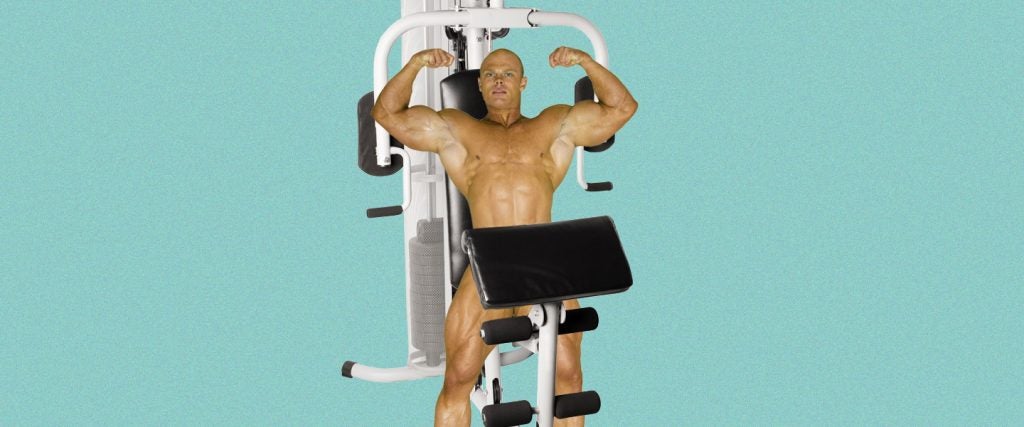When I started as a Bally Total Fitness trainer, my machine-based strength-training routine quickly got on the nerves of a lot of my colleagues. “None of the top bodybuilders do any of their most important lifts on machines,” Nick, the assistant sales manager and a free-weight evangelist, used to tell me. “You’d get so much bigger if you lifted with free weights.”
To this day, I don’t know how true that was, but I did eventually transition over to training primarily with free weights, which is why I can tell you a couple of things. First, I made big strength increases within the first three months of that transition, especially in my chest. But there was still one exercise I stayed on the machines for, and that was the chest fly.
Nine times out of 10, I’ll advise you to find a free weight or bodyweight training method as opposed to a machine-based movement. But the chest fly is that one exception where I’ll advise you differently, and instruct you to stand between two cables or take a seat between two vertical forearm pads instead of grasping two dumbbells, lying on a bench and fanning your arms out wide with nothing to support them.
What’s wrong with the dumbbell chest fly?
Only two things. Unfortunately, they’re the only two things that need to be functionally wrong in order for the exercise to be ineffective at best, and dangerous at worst.
Let’s start with the irrefutable reasons why you’d want to do chest flys in the first place: It’s theoretically the most logical movement pattern in which to train the chest muscles. The bulk of the fibers in the chest attach to the sternum and run in a horizontal arc pattern. When you want to flex your chest muscles, what do you do? If you’re patterning your chest flexing after the style of most bodybuilders, you puff out your chest, shift your shoulders forward and then slide them inward as if you were trying to move your hands across one another to opposite sides of your chest.
For lack of a more sophisticated description, the optimal way to isolate and train the muscles of your chest is through a hugging motion. Every bearhug you watched during a pro wrestling match was technically the most applicable expression of pure pectoral power. This is what makes the dumbbell chest fly so attractive: It begins with the arms out wide and the shoulders back, and it places tension on the chest as the muscles move in an arc-like pattern, with the shoulders moving forward and inward toward the middle of the chest.
You still haven’t explained the problem.
Okay, fair enough.
This is a case where you’re limited by both the equipment and the laws of gravity. The dumbbells will invariably make contact with one another long before your chest has reached its potential for maximum contraction. In the same vein, all of the tension on the dumbbells provided by the force of gravity is pulling the weight downward as opposed to horizontally, so there is no true lateral tension along the dumbbells’ inward travel path.
I’m not saying the exercise is bad when it’s performed this way; I’m just saying there are better ways to reap the desired benefits — e.g., a classic pec dec with vertical forearm pads. When you’re in it, stress is placed on the shoulders at every point along the arc-shaped path that they’re attempting to move through, without handheld weights to impede that travel.
I get it. So what’s the other problem with dumbbell chest flys?
Oh, only the long-term health of your shoulders.
The way we’ve commonly been trained to initiate a proper dumbbell fly is to hold our hands and arms out wide with weights in them, open up our chests and shoulders as wide as possible and maximally stretch our pecs. But when the hands and arms are out that wide, the chest isn’t very involved in any of the motion that moves the arms from a point below parallel up to a parallel position. All you’re doing is putting unnecessary, unproductive stress on the tendons that attach your chest to your shoulders, and without any tangible benefit to your chest.
And so, the next time a gym bro admonishes you that you’re not training your chest correctly by doing your chest flys on a machine, keep right on doing what you’re doing with a big smile on your face, recognizing that you just dodged a bullet, a date with a bag of ice and a potential pec tear.

